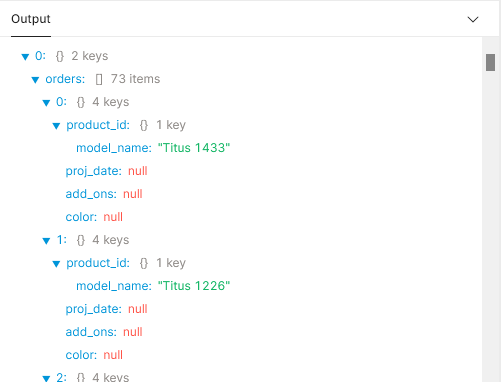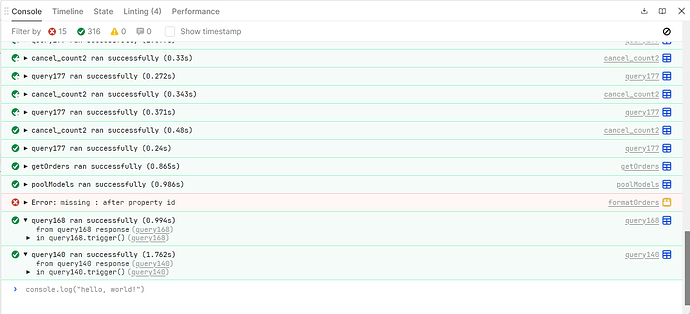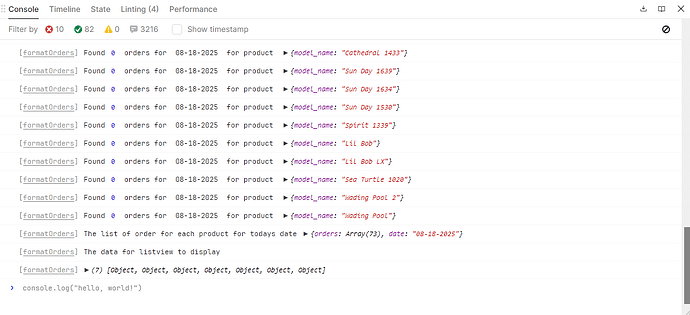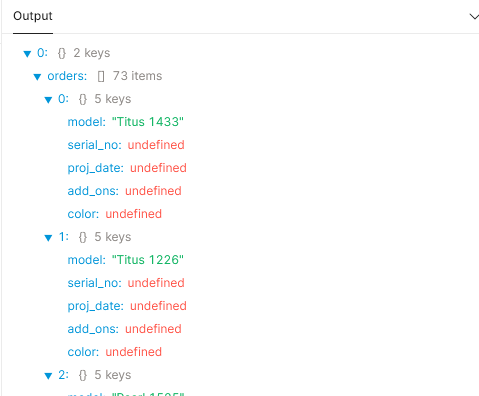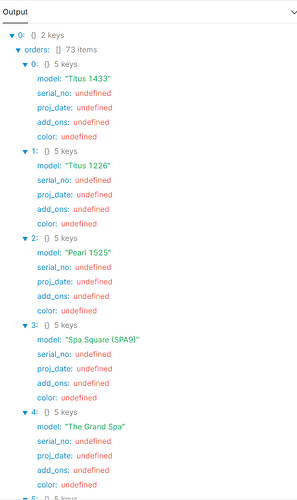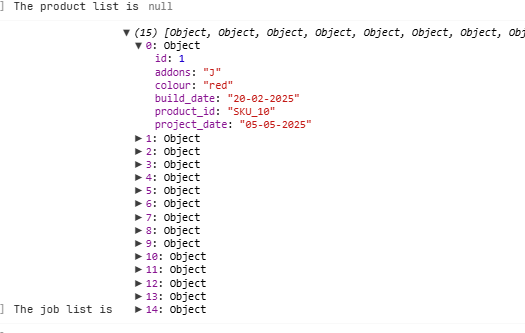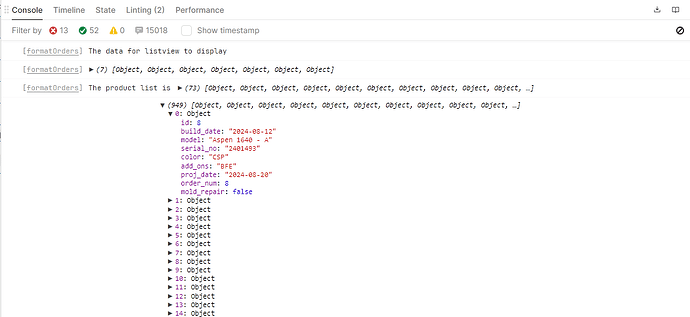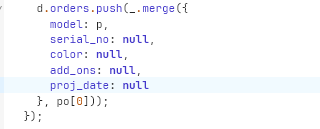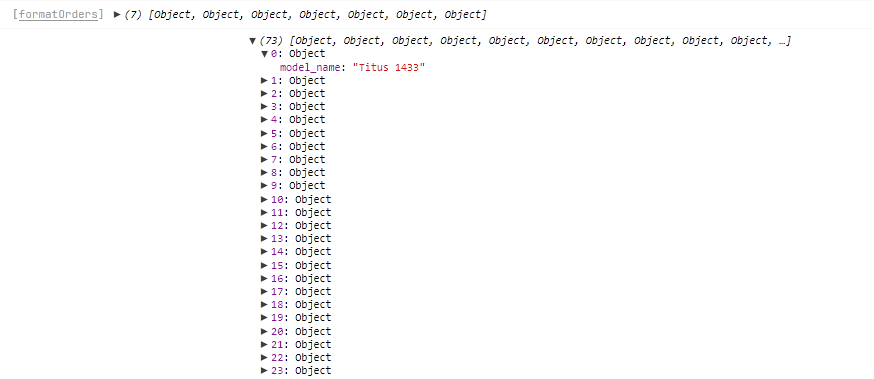Nope, I don't think it is. The screenshot you're showing there is confirming to me that you have list of model names, this is what we were expecting to see and I think it's ok. The thing it's comparing it to (in your previous message) is not also a string so the comparison is failing to find a match.
I'll try to explain in different terms. The logic is:
I have a list of product names and a list of orders - for every product name in my list find me all the orders with this product name
product_list.forEach(p => {
aka "for every product name in my list"
p should be each of the pool names from your product_list query, eg "Aspen 1640 - A" and we'll run the next command for each of those names:
let po = o.filter(x => x.model === p);
aka "find me all the orders with this product name"
This will run the comparison for every order and only return ones where the order's model is exactly the same as p
This is like a where clause in SQL - select * from orders where model = p
Each of the orders is compared to the product name.
So if it were SQL we'd be looking to match a column against a property, like "model = 'p'"
This doesn't seem to match, though, so why might that be?
Well, in your previous message you showed the console message that said:
Found 0 orders for 08-18-2025 for product >{model_name: "Lil Bob"}
This means that p is not the name of the model it's a record that has a model name within it.
In SQL terms that's like comparing a column value with an entire row.
In JavaScript terms that's comparing a string with an object (you can think of it like a record or row)
eg select * from orders where model_name = {order_id:123,name:ABC,color:blue}
It just doesn't make sense. But that's what we've got here, you've got a comparison between a value and a record.
So instead of trying to change x.model, look at what p is and maybe change that so that values are equivalent.
In JavaScript you can access the columns of your record with the dot notation, so an object/record/row/whatever you want to call it such as this:
p = { model_name: 'Aspen 1640 - A' , color: 'blue', size: 'XL' }
has multiple properties and if you want to reference one of them you can use a dot, eg p.model_name would give you the string "Aspen 1640 - A"
The key is making sure you're comparing like for like.
if x.model is a string "Aspen 1640 - A" then p also needs to be a string. I don't think it is though, and the console confirms it.
